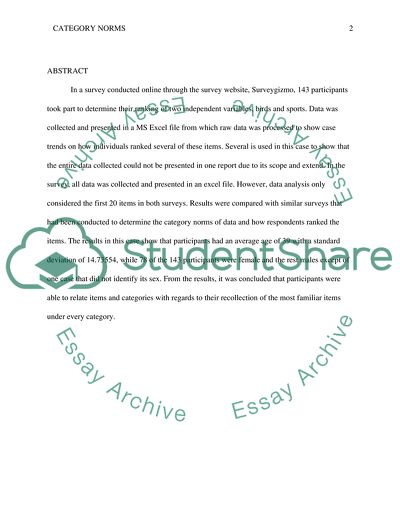Cite this document
(Category Norms: Generation Frequency Lab Report Example | Topics and Well Written Essays - 2250 words, n.d.)
Category Norms: Generation Frequency Lab Report Example | Topics and Well Written Essays - 2250 words. https://studentshare.org/psychology/1828580-categorisation
Category Norms: Generation Frequency Lab Report Example | Topics and Well Written Essays - 2250 words. https://studentshare.org/psychology/1828580-categorisation
(Category Norms: Generation Frequency Lab Report Example | Topics and Well Written Essays - 2250 Words)
Category Norms: Generation Frequency Lab Report Example | Topics and Well Written Essays - 2250 Words. https://studentshare.org/psychology/1828580-categorisation.
Category Norms: Generation Frequency Lab Report Example | Topics and Well Written Essays - 2250 Words. https://studentshare.org/psychology/1828580-categorisation.
“Category Norms: Generation Frequency Lab Report Example | Topics and Well Written Essays - 2250 Words”. https://studentshare.org/psychology/1828580-categorisation.


